The Chamber's Camel
For many years a framed flag has been displayed at our Hull offices, it commemorates an event on the 25th May 1918 when our forerunner, the Hull Incorporated Chamber of Commerce & Shipping, presented an aeroplane to Australia.
The Imperial Air Fleet "City of Hull" Flag. A Red Ensign featuring the Southern Cross of the Australian national flag.
The history of this event begins in late 1917. The 17th December minutes of the Chamber’s parliamentary committee record in that year that a letter had been received from the Imperial Air Fleet Committee “desiring the chamber to organise a fund for the presentation of an aeroplane from Hull for immediate use at the front and to be subsequently handed over to the dominions as a souvenir”. The parliamentary committee gave their unanimous support to the proposal and also recorded that they would seek the support of the Lord Mayor and City council.
The Imperial Air Fleet committee (IAF) was not a government body, but a private group the objective of which was to advocate for the development of military air power with a particular emphasis on developing aviation across the dominions of the British Empire. The committee was active from 1913, during World War 1 they encouraged fund raising activities across the UK. Hull was one of twelve cities and eight Chambers of Commerce to fund an IAF aeroplane.
At the 7th January 1918 meeting of the Chamber council it was agreed the Chamber president and Vice President would take immediate steps to raise a fund of 2000 guineas. The minutes of this meeting also note that the aeroplane would be named “The City of Hull” and presented to Australia.
In fact fund raising activity was already underway before this formal start. The Chamber President, Mr G H Loveridge, had written to Sir Mark Sykes on the 1st January 1918 asking him to consider subscribing to the aeroplane fund. We can assume he wrote similar letters to other notable Chamber members seeking support.
At the 4th February Chamber council meeting the President reported progress on the fund raising and noted “Huddersfield had completed their subscription list and that the presentation of an aeroplane was to be made shortly”. It was “hoped the Hull members would not lag behind”.
The 4th March minutes of the Chamber parliamentary committee note that the fund had reached over £1300.
On 5th April Mr Fairfax Scott, Secretary of the Imperial Air Fleet committee, attended the Chamber council meeting and outlined the objectives of the IAF. It was reported the fund required £448 3/6 to reach its target.
By early May the fund had nearly reached its target and planning was underway for a presentation event. This would include a formal lunch for a delegation of guests representing Australia, the IAF committee, the newly established RAF and the subscribers to the fund. Furthermore the aeroplane itself would be brought to the city for the handover ceremony.
Two sites were considered for the handover, the Walton St fairground and the Hull Grammar school playing fields on Anlaby Rd.
In 1918 the playing fields ran alongside Alliance Ave, spanning the area between Anlaby Rd and Spring Bank West. Today only a small part remains, the rest has been developed for housing.
The Grammar school playing fields were selected, and the event was advertised several times in the local press inviting the public to attend. On the 24th May a Sopwith Camel, serial D3388, arrived in the city in the charge of 2nd Lt W J Walford. This aeroplane had been manufactured by Clayton & Shuttleworth at Lincoln.
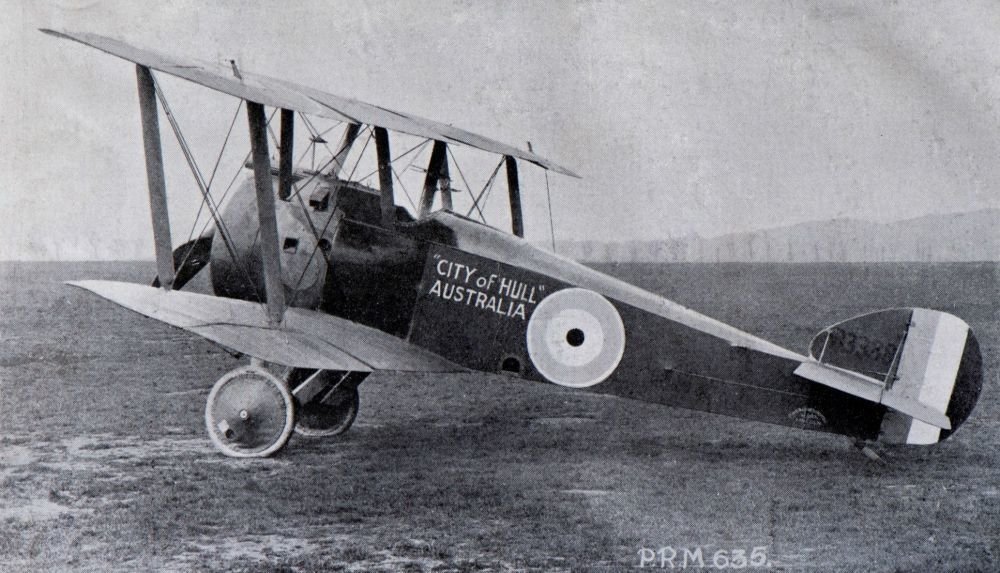
D3388 photo probably taken at No 4 Aeroplane Acceptance Park, Lincoln, before it's flight to Hull.
A large number of guests came to the city for the presentation. These included several members of the IAF committee, including its President Lord Desborough and Mr C J Fairfax Scott. The Australian delegation included the Hon J C Manifold MP, his wife and Lt Col Walter Oswald Watt. Local guests included the Lord Mayor, Hubert Johnson, & Lady Mayoress, Rt Hon T R Ferens MP & wife and The Sheriff, J L Richardson.
The guests were first taken on a tour of the city docks and port facilities prior to a formal lunch with the Chamber members who had subscribed to the fund.
The public presentation started at 2:30 PM at the grammar school playing fields. We have an original programme of the event and there is also a Pathé newsreel available online. The full newsreel shows an honour guard from 1st Battalion, The East Yorkshire Regt, being inspected by Lord Desborough, Lt Col Watt and Brig General Becke. It is further reported that the regimental band was present and a flypast of half a dozen aircraft took place. The crowd was reported to be in the thousands.
D3388 in Hull, note the inscription has changed. Photo courtesy of Andy Kemp, Cross & Cockade
The aeroplane was christened by Mrs Loveridge breaking a bottle of wine in front of the nose. Each IAF aeroplane was presented with a bronze mascot bearing the motto of the IAF “Heaven’s Light Our Guide” and a symbol of the recipient country, a kangaroo in this case. Mrs Manifold attached the mascot to the fuselage.
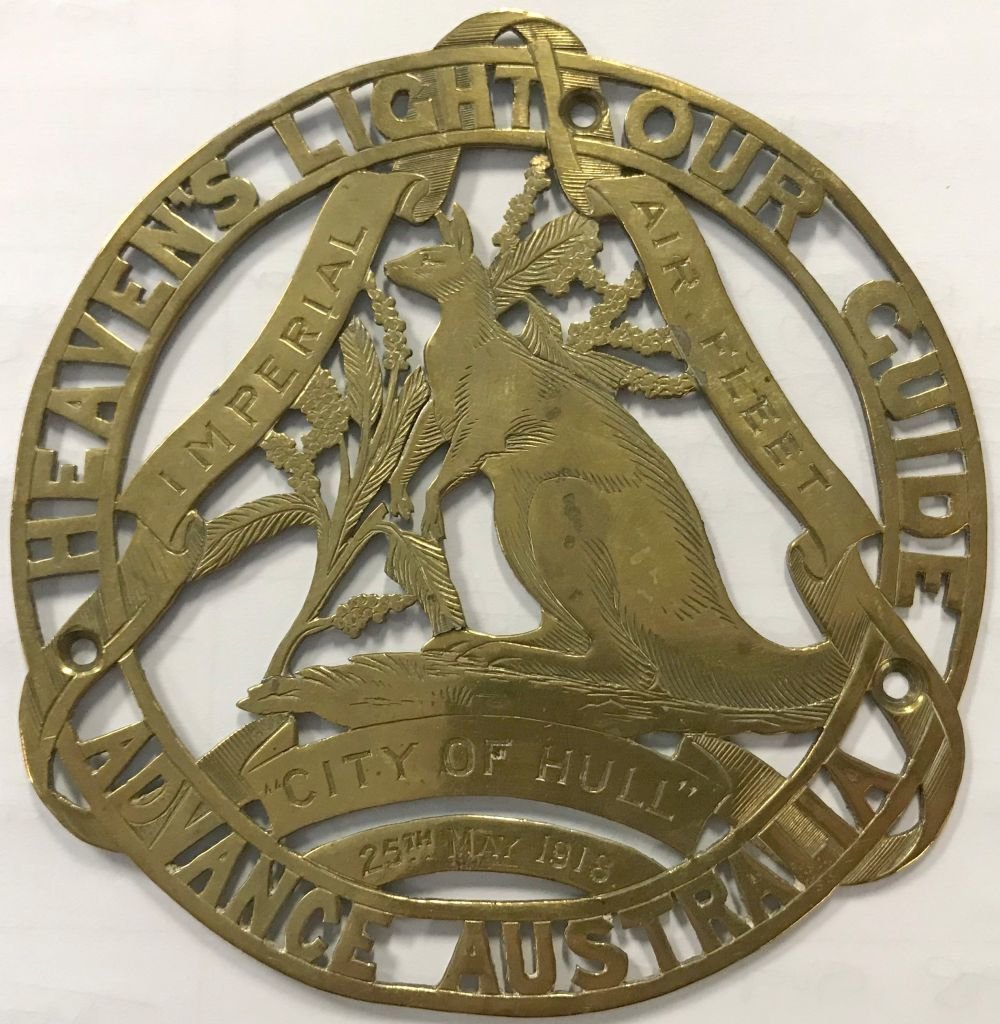
Copies of the mascot were given to the Hon J C Manifold MP and Lt Col Watt. Flags were presented to several people, the flag we have today was given to Mr G H Loveridge, the Chamber President.
The IAF flags and mascots were designed by Mrs Fairfax Scott, each dominion and city had their own design.
Notable Aviators at the Ceremony
Lt Col W O Watt OBE
Walter Oswald Watt was a wealthy Australian business man and part time militia officer before the war. He often travelled between Australia and the UK. In 1911 while residing in London he joined the Royal Aero Club and took flying lessons at a school on Salisbury Plain. He quickly qualified and was issued Royal Aero Club pilot certificate No. 112 on August 1st. He was an early proponent of military aviation in Australia. At the outbreak of World War 1, Watt was living in France and working at the Blériot factory. He volunteered himself and his own Blériot aeroplane for French military service, thus becoming Australia’s first combat pilot albeit in the aviation branch of the French Foreign Legion.
After 18 months of service as a reconnaissance pilot on the western front, in 1916 he transferred from the French military to the Australian Flying Corps. He served with the AFC initially in Egypt and then once more on the western front. In 1918 he had been promoted to Lieutenant Colonel and was commanding officer of 1st Wing AFC, based at Tetbury, responsible for Australian flying training in England. He was awarded the Legion of Honour and Croix de Guerre for his French service. He received an OBE for his wartime service in 1919.
We believe the City of Hull mascot pictured was the copy presented to Lt Col Watt. Watt's aeroplane earlier in the war had featured a Kangaroo motif so this mascot was an especially fitting gift. Pictured is Oswald Watt in French uniform (on the left) in front of an MF.11bis, 17 March 1916, note the nose art of his aeroplane.
Brig General J H W Becke CMG DSO AFC1
John Becke was a career soldier, an infantry officer in the 2nd Boer War he transferred to the Royal Flying Corps in 1912 shortly after it was formed. He held Royal Aero Club certificate no. 236. He was the first commanding officer of 6 Sqn and later commanded 2 Sqn in France before being promoted to Wing and then Brigade commands later in the war. In 1918 he came to Hull as the representative of the Air ministry.
1 Air Force Cross, not to be confused with Australian Flying Corps
Major S V Sippe DSO OBE
Sydney Vincent Sippe was an aviation pioneer, learning to fly in January 1912 at the Avro school, Brooklands, he received Royal Aero Club certificate no. 172. He worked as a test and demonstration pilot for Avro and made the first successful flight of a seaplane in the UK in 1912. At the outbreak of World War 1 he joined the Royal Naval Air Service. He was awarded the DSO for his participation in the Friedrichshafen raid in November 1914. He was also awarded by France the Legion of Honour and Croix de Guerre and by Belgium made a Chevalier of the Order of Leopold. In May 1918 he was the commanding officer of No 2 Marine Acceptance Depot at Brough overseeing the acceptance of seaplanes for the RAF.
The Johnson Family
We now know that John William Johnson, usually known as Will, attended the presentation. His diary records he saw the presentation and the weather was splendid. The diary entry goes on to record "the children held their “Sale of Work” in the garden in aid of St Dunstan’s blinded soldiers". It is possible his children may have accompanied him to the event so a young Amy Johnson, then 14 years old, may have witnessed the ceremony. It may even have been one of the events that piqued her early interest in flying and led to her record breaking solo flight to Australia in 1930.
Frontline Service
Following the ceremony D3388 was flown south and then across the channel, arriving in France 31st May at No 1 Aeroplane Supply Depot. Despite being presented to Australia, the reality was that D3388 would not be reserved for an Australian unit, instead issued to the first squadron requiring a replacement aeroplane. It was delivered to 210 Sqn RAF, arriving on 5th June. Prior to the formation of the RAF on 1st April, which saw the merger of the flying branches of the army and navy, 210 had been 10 Sqn Royal Naval Air Service.
Pictured is B7280, another Clayton & Shuttleworth built aeroplane. This is one of only eight original Sopwith Camel’s in the world. This aircraft served with 210 Sqn and flew 16 patrols in company with D3388, several of the squadron pilots flew both machines. Note the bomb rack which D3388 was also fitted with. The white circle aft of the RAF roundel is the identification symbol of 210 Sqn, D3388 would have had similar squadron markings applied. Today B7280 is preserved at the Polish Aviation Museum, Krakow.
Almost ironically given the purpose of the Imperial Air Fleet, 210 Sqn had a number of Canadian pilots and it was Canadian 2nd Lt W Stanley Jenkins who was to be D3388’s principal pilot.
William Stanley Jenkins was from Russell, Ontario and joined the Canadian army in October 1915 as a private. He served in the 87th Battalion, the Canadian Grenadier Guards. He can be seen on page 13 of this photographic record of the battalion as a L/Cpl in the battalion band. He served in France with the Grenadiers from August 1916 until July 1917 by which time he had become a corporal. He applied to join the Royal Flying Corps in June, accepted, he transferred to the RFC arriving at Farnborough in late July 1917. As he progressed through training he was commisioned as a 2nd Lieutenant. On completion he joined 210 Sqn in May 1918.
Lt Jenkins was the pilot for D3388's first combat mission on 7th June when D3388 was sent up with 3 other aircraft to chase what appears to have been an enemy reconnaissance flight.
Its second mission was on 9th June, again with Lt Jenkins in the cockpit, this was an offensive patrol of 15 aircraft. The squadron patrolled Ypres to Bailleul and bombed Bac St. Maur, fought with enemy aircraft over Ploegsteert Wood claiming 3 enemy aircraft but losing two of their own and then shooting down a German kite balloon. The patrol also encountered heavy and accurate AA fire, D3388 was hit in its petrol tank. The two missing pilots, Lt Cecil Marsden and Lt Wilder Breckenridge, became prisoners of war.
On the afternoon of 16th July D3388, with Lt William Stephenson in the cockpit, was sent on a special mission with two other aircraft. They were sent to patrol the sea, 10 miles north of Nieuport, pick up 2 Royal Navy C.M.B's (coastal motor boats) and search the area for a Camel reported down. Although the flight met up with the navy boats the search was unsuccessful.
On 29th July 1918 while on patrol off the Belgian coast Lt Jenkins crashed D3388 in poor visibility 5 miles off the coast in the Ostend area. Fortunately he was picked up by a paddle steamer, after a short stay in hospital at Dunkirk he returned to his squadron. He would return home to Canada in 1919 with a DFC & Bar, credited with 12 victories.
The 2nd "City of Hull"
It was government policy that if a presentation aircraft was lost or otherwise struck off that a replacement aircraft would carry on the name.
In October 1918 Sopwith Camel E7189, manufactured by Ruston Proctor at Lincoln, was named City of Hull. There was no ceremony for this aircraft, it was sent directly to France and served with 65 Sqn.
Several pilots would fly E7189 in the remaining weeks of the war, including two aces Capt J L M White, another Canadian, and Capt M A Newnham.
Captain Maurice Newnham was credited with 18 victories, two of these while flying E7189. Maurice Newnham joined the RFC in January 1915, initially with the rank of air mechanic 2nd class. He was accepted for pilot training in 1917 and posted to 65 Sqn in April 1918. He was awarded the DFC for an action in September 1918 during which he bombed a German airfield at night. On 4th November 1918 he shot down 2 Fokker D.VII in the space of 5 minutes while flying E7189. Newnham left the RAF at the end of the war but rejoined in 1939. During WW2 he was the commanding officer of No. 1 Parachute Training School, overseeing the training of British airborne forces, allied forces and SOE agents. He was awarded an OBE for his service in WW2.
Research
This article has been researched and written by David Marritt. I'm continuing to research the history of these aeroplanes and the people connected to them. If you have any information to share or questions please contact me.
Acknowledgements
We would like to thank the following for their assistance in researching this history;
William Beattie and Steve Paterson for visiting our offices with the mascot
Andrew Pentland of www.airhistory.org.uk
Andy Kemp from Cross & Cockade for sharing his photo of D3388 at the presentation ceremony
Chris Clark for his advice and the photo of Oswald Watt
The RAF Museum, Hendon
The staff of the Hull History Centre
Simon Birch for sharing his records of 65 Sqn
The contributors at GreatWarForum.org
Alan Wilson for his photo of B7280
Rick Welton, Amy Johnson Arts Trust
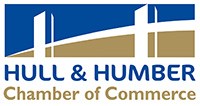
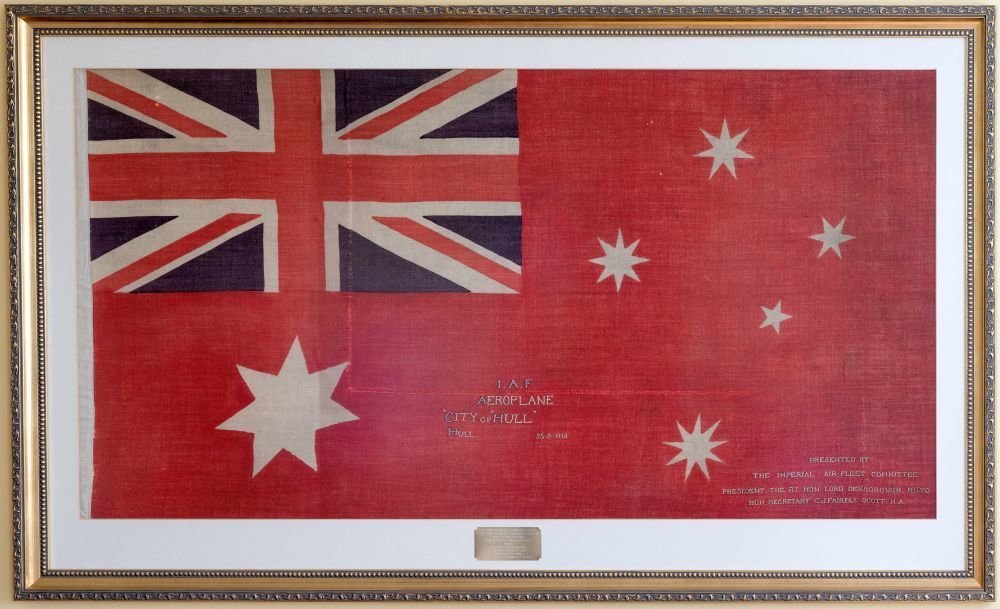
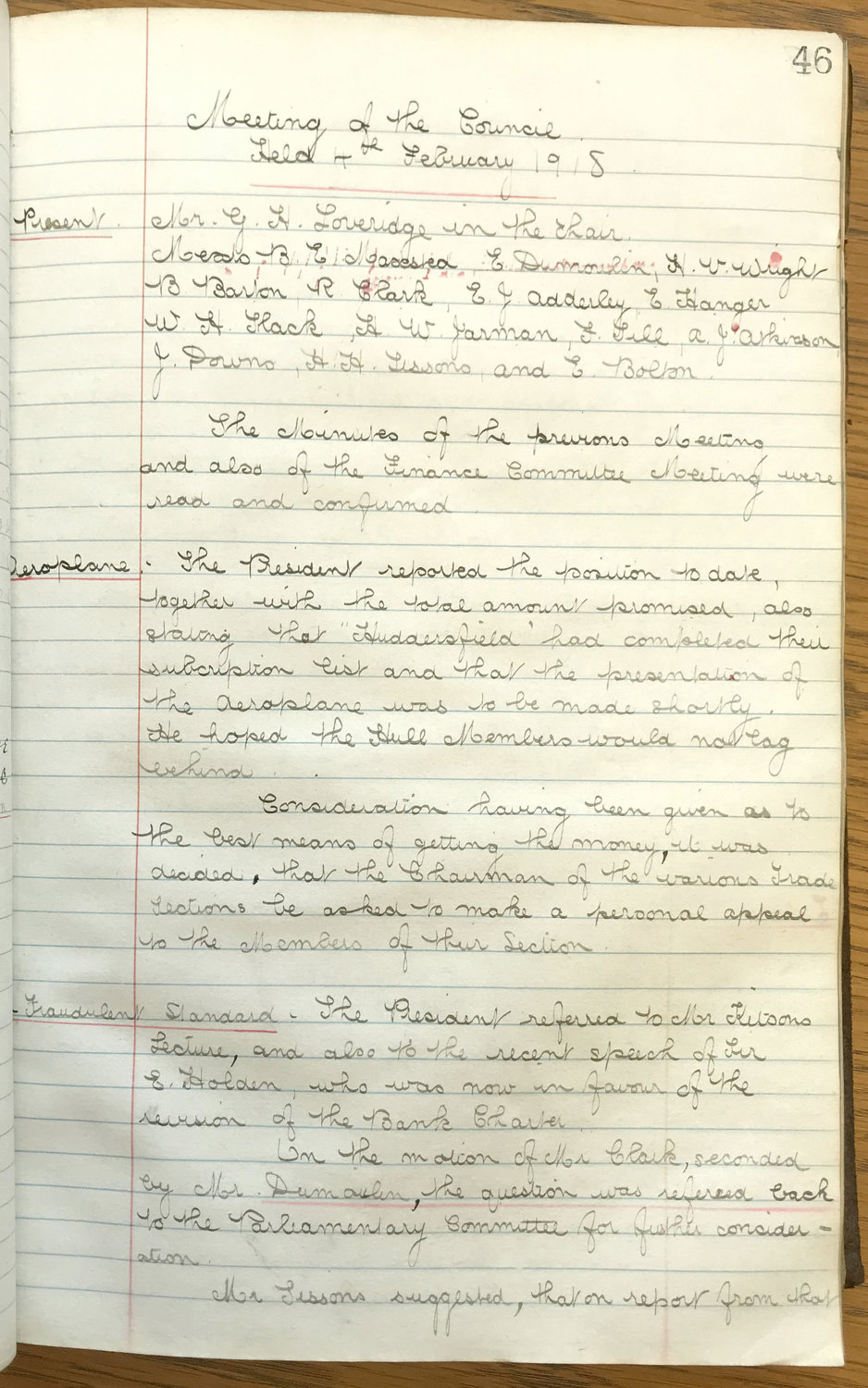
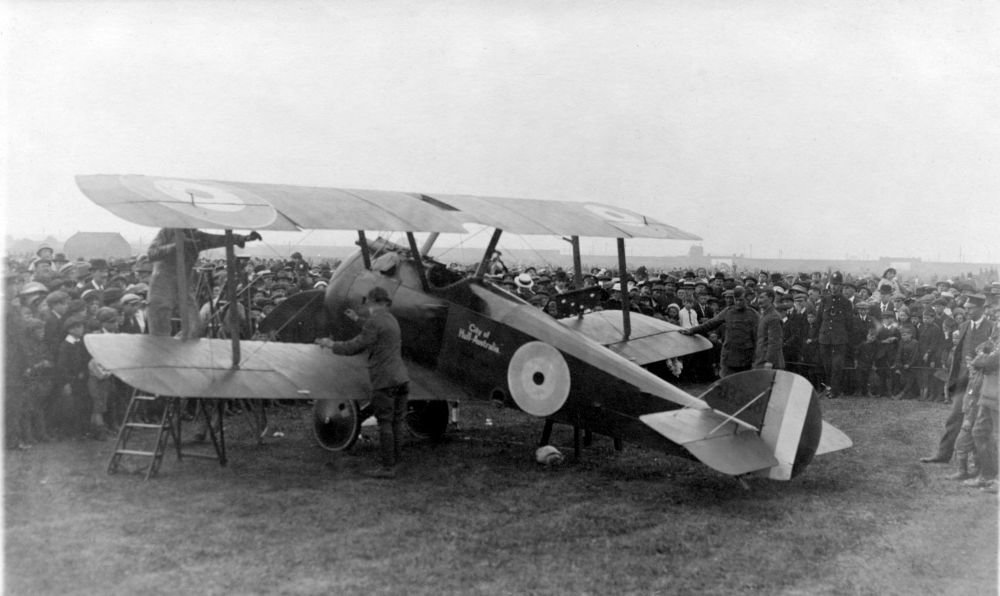
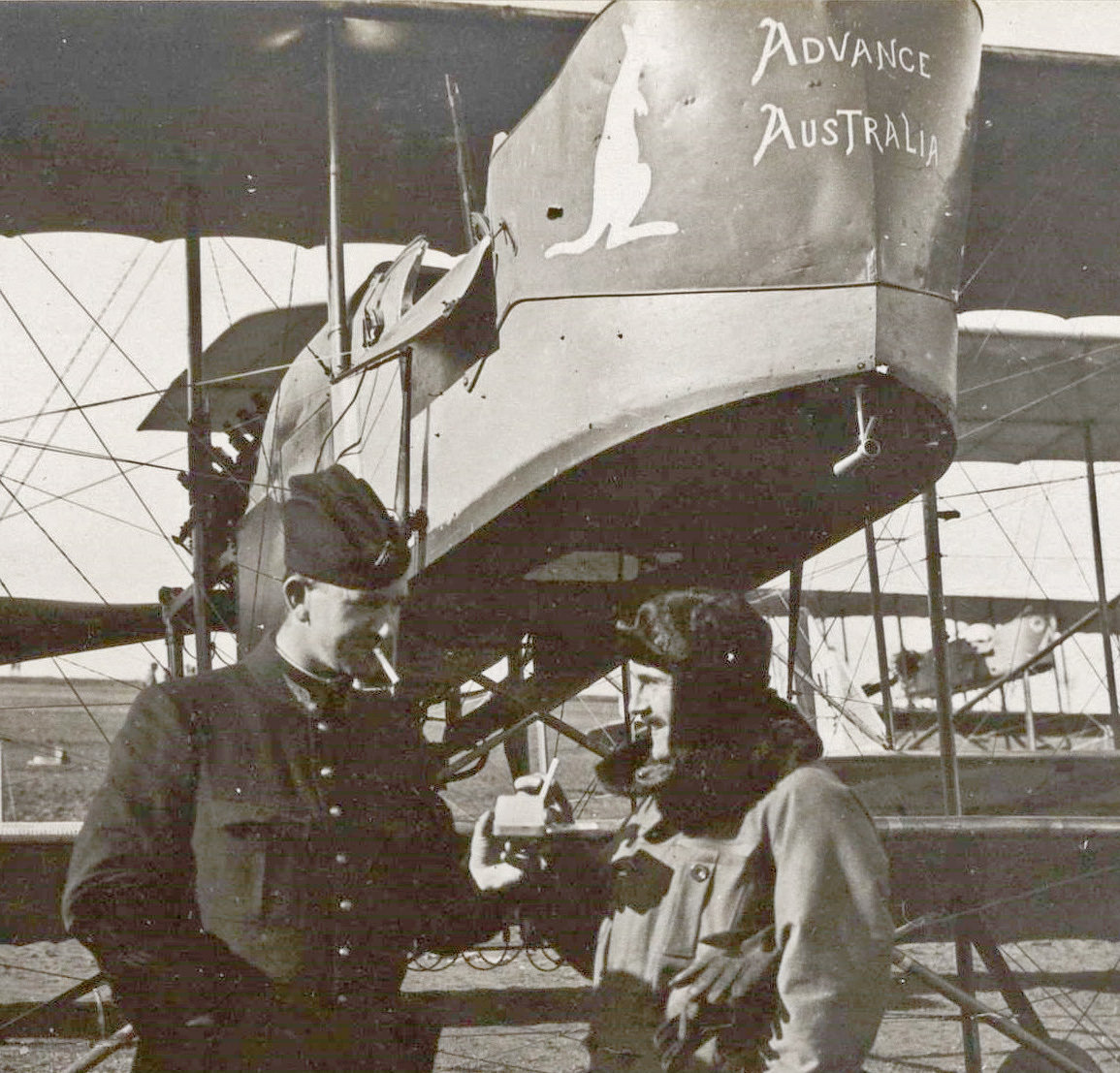
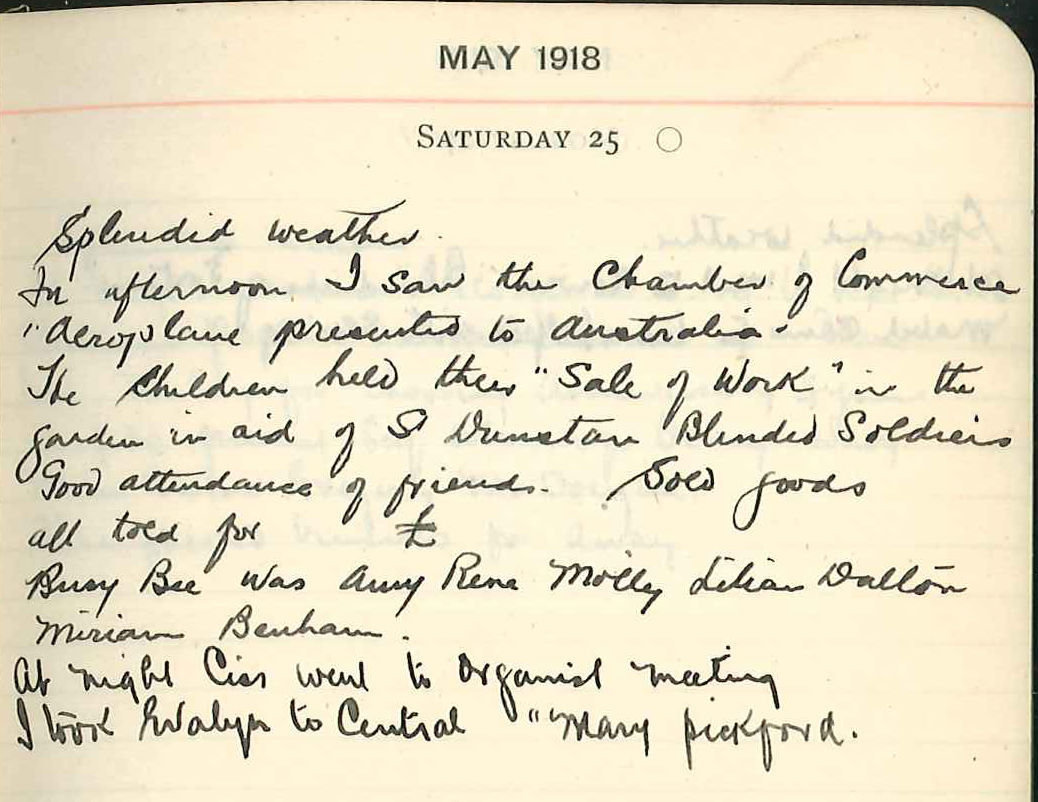
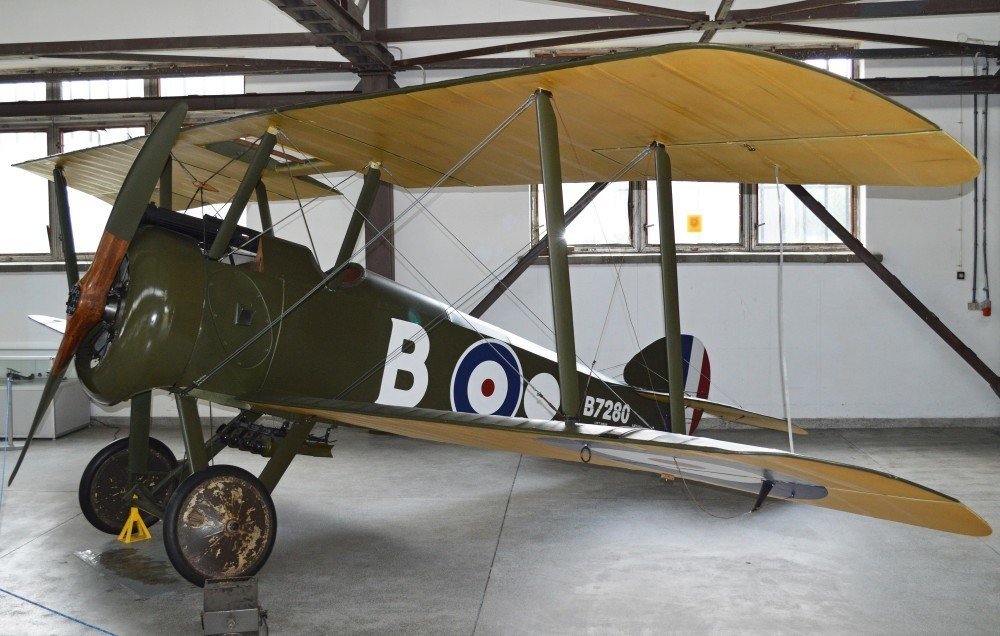 Photo of B7280 by Alan Wilson
Photo of B7280 by Alan Wilson

























